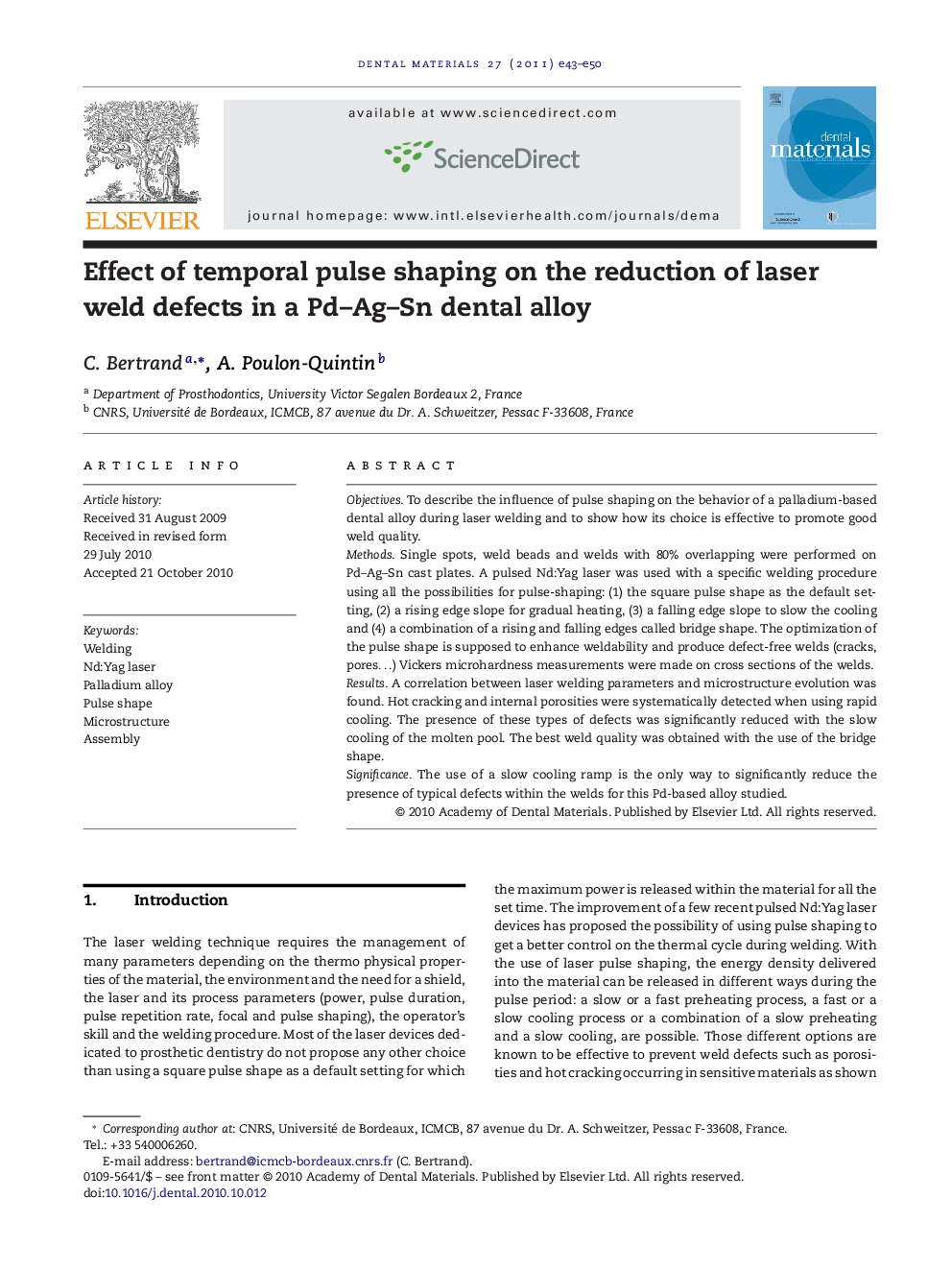| Article ID | Journal | Published Year | Pages | File Type |
|---|---|---|---|---|
| 1421914 | Dental Materials | 2011 | 8 Pages |
ObjectivesTo describe the influence of pulse shaping on the behavior of a palladium-based dental alloy during laser welding and to show how its choice is effective to promote good weld quality.MethodsSingle spots, weld beads and welds with 80% overlapping were performed on Pd–Ag–Sn cast plates. A pulsed Nd:Yag laser was used with a specific welding procedure using all the possibilities for pulse-shaping: (1) the square pulse shape as the default setting, (2) a rising edge slope for gradual heating, (3) a falling edge slope to slow the cooling and (4) a combination of a rising and falling edges called bridge shape. The optimization of the pulse shape is supposed to enhance weldability and produce defect-free welds (cracks, pores…) Vickers microhardness measurements were made on cross sections of the welds.ResultsA correlation between laser welding parameters and microstructure evolution was found. Hot cracking and internal porosities were systematically detected when using rapid cooling. The presence of these types of defects was significantly reduced with the slow cooling of the molten pool. The best weld quality was obtained with the use of the bridge shape.SignificanceThe use of a slow cooling ramp is the only way to significantly reduce the presence of typical defects within the welds for this Pd-based alloy studied.
